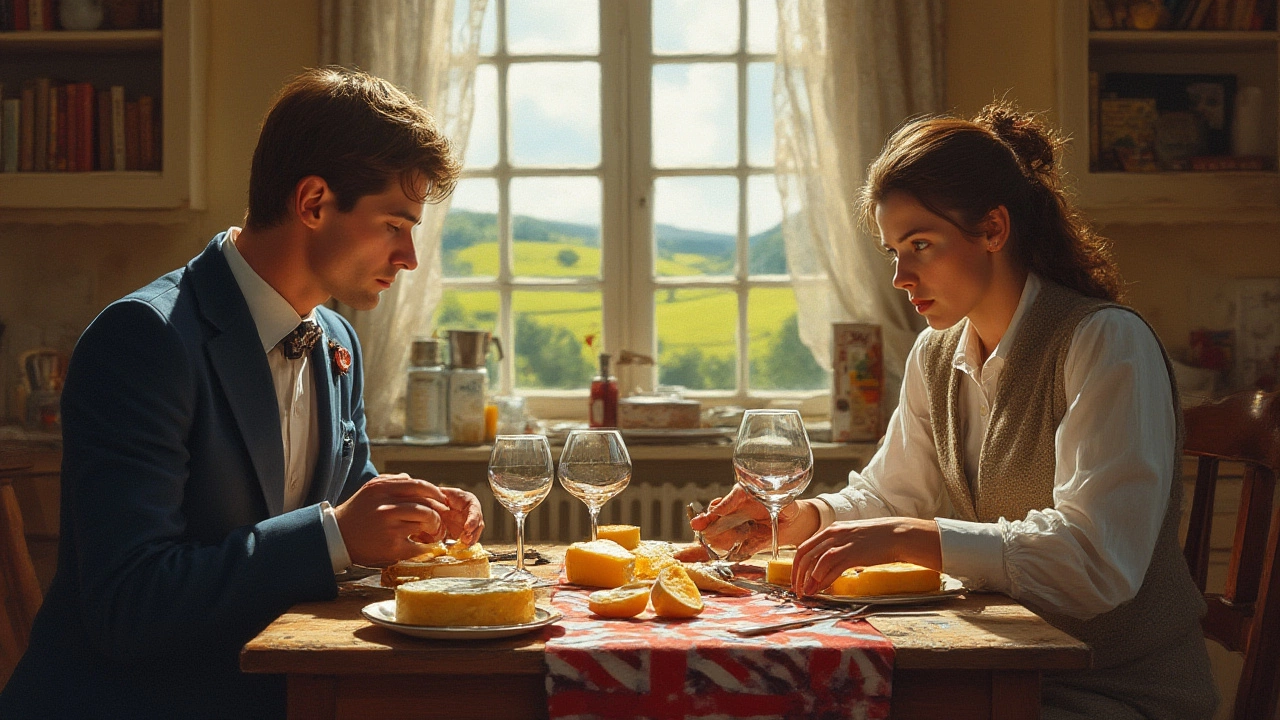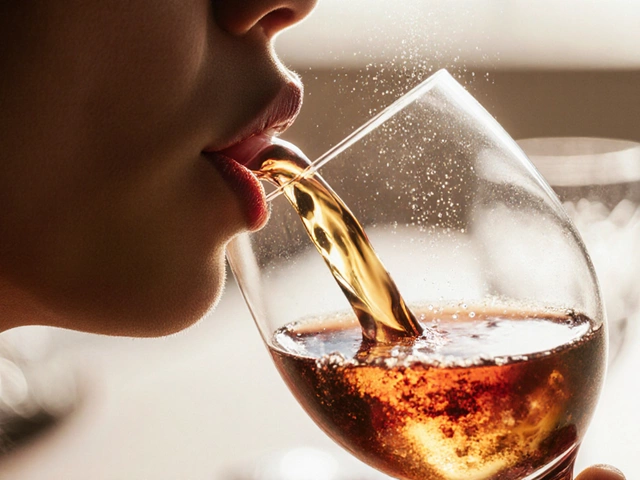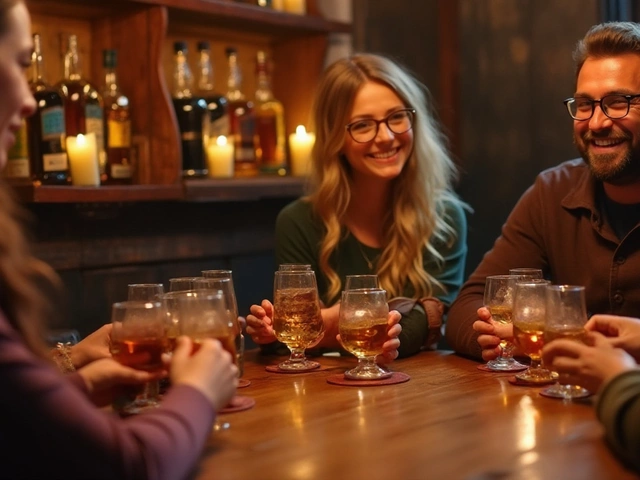Wine glasses clink and a cheese board lands on the table—a classic combination that's been making evenings better for centuries. But here’s a question that’s sparked heated debates in chic wine bars and at backyard BBQs: do you start with the cheese or do you sip the wine first? Ask a bunch of foodies and you’ll get confident but opposing answers. Some say the cheese comes first, so it can prime the palate for the complexity of the wine. Others insist you need a good sip of wine to set the stage for the cheese’s flavors. If you’re like me, you’ve probably swapped back and forth, still unsure of the “official” order (and possibly, like my dog Max wishing he could try both). Let’s dive past the assumptions and get into the hard facts, fun stories, and savvy tricks behind this age-old question.
The Science of Taste: What Happens in Your Mouth
Your tongue is basically the gatekeeper to a whole world of flavor. The order you taste food and drink actually changes the way you enjoy them. Here’s the deal: Cheese is rich, creamy, and packed with fat—especially stuff like Brie or sharp cheddar. That fat coats the tongue, which means if you eat cheese before sipping wine, your taste buds get a layer of creaminess that can soften sharp, acidic wines and make bold reds or tart whites seem smoother. This isn’t just a guess—several food scientists have actually tested how rich foods change your ability to pick up acid, bitterness, salt, and sweet notes. In fact, a study published in the journal 'Flavor' used dozens of volunteers to see how tasting cheese first blunted the sourness in wines, helping tasters pick up more fruity or floral notes instead.
But if you flip the order and start with wine, there’s a different effect. Wines—especially ones with high acidity like Sauvignon Blanc or Champagne—can actually cut through fat and “reset” your palate in the same way a bite of sorbet or pickled ginger does at a sushi bar. That means you’re more likely to pick up the subtle flavors in the cheese. Think of it like this: it’s the difference between tasting a sharp aged Gouda after rinsing your mouth with water versus straight after eating a piece of sausage. The wine “cleans” the stage so the cheese comes through clear and bold.
Here’s where it gets fun: experts from top wineries like Château Margaux in France say there’s actually no one-size-fits-all rule—the best tasting order can even change depending on the wine/cheese combo. For pungent blue cheese, you might want the wine first to tame the funk, but with a buttery triple-cream, start with the cheese and then sip that crisp white. The folks behind the Institute of Masters of Wine (those are the heavy-hitters in the wine world) have documented these nuanced effects for years. So if you’re wondering why things sometimes taste flat or odd, you probably just swapped the order.
Classic Pairings and How Different Orders Change the Game
Let’s look at some classic pairings that pop up on tasting menus and at home wine nights. Wine and cheese pairing is not just about tradition, it’s about chemistry. Start with Brie and Champagne. If you eat the Brie first, you’re left with a creamy layer that Champagne’s bubbles scrub through, leaving a mouthful of delicate fruit and a finish that just won’t quit. Try doing it the other way—Champagne first, then the cheese—and you’ll notice the alcohol feels a little harsher, and the cheese’s richness overshadows the next sip.
Another example? Blue cheese and Port. The heady, salty punch of blue cheese before the sweet hit of Port turns the wine into something almost caramelized, mellowing any sharpness. Flipping it, with Port first, the blue cheese can seem sharp or even metallic. The main principle? When the cheese is more powerful than the wine, taste wine first so it can act as a palate cleanser. If the wine is the heavy hitter, let cheese lay down a fatty ‘primer’ for balance.
Check out this handy table that sums up how different tasting orders play out for popular pairs:
| Cheese | Wine | Cheese First | Wine First |
|---|---|---|---|
| Brie | Champagne | Smooth bubbles, fruity finish | Sharper, less creamy |
| Cheddar | Cabernet Sauvignon | Practically melts, wine bitterness reduced | Cheddar seems more tangy, wine feels drier |
| Blue Cheese | Port | Mellow sweetness, caramel aftertaste | Blue cheese metallic, port feels thin |
| Goat Cheese | Sauvignon Blanc | Herbaceous pop, smooth finish | Tangier, cleaner, cheese more acidic |
So, should you always default to cheese first? Not quite. In blind taste tests run for food and wine industry pros (ever watch “Somm” on Netflix?), most agreed that tasting cheese first makes sense for high-acid or bolder wines. But when you’re jumping into delicate whites or sparkling wines, a quick sip before cheese can help you avoid the “overcoated tongue” problem—so you don’t lose some wine complexity.
One fun trick: at your next gathering, have everyone try both orders for each pairing and compare notes. You’ll probably be surprised how much the sequence alters what you notice. For instance, with goat cheese and Sauvignon Blanc (the classic French bistro move), try wine first for a zingy citrus kick, or cheese first to dial up creaminess. Most cheese shops and wineries say there's no shame in mixing it up—it’s about what brings out the best in both.

Maximizing Flavor: Expert Tips for The Ultimate Tasting
If you want to taste like a pro, think of yourself as both scientist and artist. You’ve got tools in your hands, and the order matters—sometimes. The first step is knowing your cheese and wine lineup: mix styles, textures, and flavors. Don’t bunch all blues or reds together; a smarter spread means you won’t burn out your taste buds. Experts at the American Cheese Society suggest laying out cheese from mildest to strongest, and wine from light to bold—the same logic as a seven-course tasting dinner.
Here’s a go-to guide for tasting:
- Look, sniff, and taste the wine solo. Notice acidity, fruit, sweetness.
- Eat a small piece of cheese. Let it sit on your tongue, then swallow.
- Sip the wine after the cheese. Does it taste smoother or sharper?
- Reverse the order: taste the wine, then the cheese. Which combination sings?
- Write down or chat about what surprises you—don’t trust your memory after three pours!
Grapes, nuts, or honey on your cheese board? These aren’t just for decoration. Their sweetness or crunch can help bridge flavors, refresh your mouth, and keep the experience interesting. Professionals like sommelier Aldo Sohm recommend plain crackers or baguettes to “reset” between tastes—just avoid heavily spiced or seeded bread, which can dominate the flavor party.
Don’t forget temperature. Room-temperature cheese packs more flavor than fridge-cold cheese, and a slightly chilled (not ice-cold) wine will show its complexity better. This detail changes the flavor game in huge ways (try cold Brie and warm Camembert side-by-side and you’ll see). Another thing: strong cheeses like Stilton or Roquefort can overpower subtle whites, so think about alternating flavor strength like a DJ mixing tracks. If you want, give each cheese its match made in heaven, rather than using one wine for all. Wine shops sometimes offer “flight and bite” tastings for exactly this reason.
Avoid common mistakes. Don’t smoke or chew gum close to tasting time. Don’t dump a massive slice of cheese into your mouth—that’ll only drown out the flavor. And if you’re worried about etiquette, classic hosts in France will tell you: nobody cares about which comes first as much as whether you’re having fun and exploring new flavors. (Though, if you’re at a fancy spot, maybe follow their lead until you’re settled in.)
Cheese First or Wine First? Why Not Both—And When It Matters
Everyone loves a rule, but half the fun of cheese and wine is breaking them. The world’s longest-running wine and cheese festival—held in Franche-Comté, France—invites folks to argue, taste, and swap stories about which order reigns supreme. Turns out, the people who get the most from their tastings are the ones willing to experiment. A cheese-first person might suddenly discover a “wow” moment with a wine-first combo, and vice versa. Personal taste, mood, and even what you had for lunch can sway your experience.
When does it matter most? If you’re splurging on a rare wine or artisan cheese, you might want to go cheese first—so your palate doesn’t get blasted by acid or tannin before you can appreciate the more delicate flavors. On the other hand, at big, boozy parties, a splash of wine between strong cheeses is a lifesaver for your tired taste buds. And don’t forget pairings with dessert wines or liqueurs—sweetness will always dominate, so finish with the sweetest sip for a satisfying end note.
I’ve been to tastings where the host insisted on “wine, then cheese, then wine again”—almost like a foodie sandwich—just to highlight the evolution of flavors. There’s nothing wrong with that approach. Some cheese makers split tastings into “verticals” (like you’d taste years of the same wine) to see how aging changes both cheese and wine. If that sounds nerdy, it is—but it’s also wildly fun.
So, do you eat cheese or sip wine first? There’s no universal law, just a toolkit of ideas. Next time you crack open a bottle—or if Max the dog eyes that brie on the table—try both orders, keep an open mind, and see what pops out. After all, the real answer is whichever way makes your night more delicious and full of surprises.


